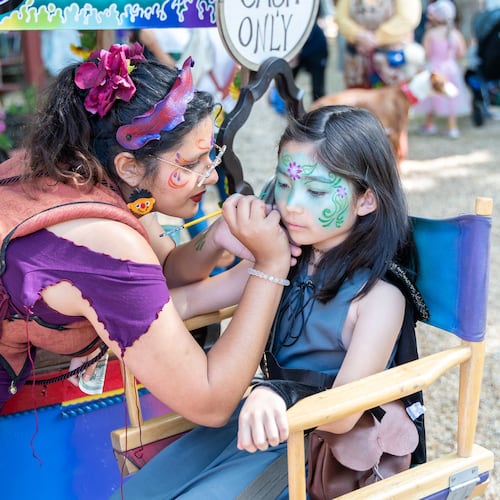When jazz giant Ramsey Lewis greeted his Atlanta friend, pianist Joe Alterman on a phone call, he invariably started with the same proclamation, usually spoken twice: “Life is good! Life is GOOD!”
That affirmation was “said with a smile that I could clearly hear and feel over the phone,” wrote Alterman on his Facebook page; “this was Ramsey Lewis’ motto.”
Reliably positive, the talented Lewis had much to celebrate in his life. He rose out of poverty to become a celebrated jazz musician and then, improbably, a pop music phenomenon.
His instrumental cover version of “The ‘In’ Crowd,” recorded by the Ramsey Lewis Trio in 1965, became a pop sensation and won a Grammy in 1966.
The success spawned other pop hits, and introduced Lewis to a broad national audience. His knack for getting the crowd moving during that live recording also betrayed a natural ability to reach the listener.
“Ramsey was a great entertainer,” said Gary Motley, jazz pianist and director of jazz studies at Emory University. “He knew how to work a room. He would connect with the people, and really play to his audiences.”
Lewis, 87, died Monday, Sept. 12, at his Chicago home.
He grew up in Chicago’s infamous Cabrini-Green housing projects. Trained as a classical pianist, he also played in church from boyhood. Both sources emerged in his music, which shared the same gospel-inflected hard bop championed by Horace Silver and Bobby Timmons.
A Ramsey Lewis performance offered romantic ballads and standards, but as the evening progressed, he made audiences get up on their feet. “Slowly but surely by the time we get to the middle of the show, I start moving to songs that are a bit more shake-your-booty if you will,” he told NPR.
Atlanta jazz trumpet player and big band leader Joe Gransden grouped Lewis with artists such as Lee Morgan and Herbie Hancock, whose tunes “Sidewinder” “and “Watermelon Man” (respectively), also had chart success and brought a soulful jazz swing to a much broader audience.
“They were able to have creative improvisation on more of a danceable groove that was more acceptable to millions of people,” said Gransden. “The result not only helped their careers, but helped jazz music reach a bigger audience.”
Lewis repeated the pop-jazz combination a few times, with a cover of “Hang on Sloopy,” “Summer Breeze” (by Seals and Crofts), “Dancing in the Street” and several Beatles tunes, including “And I Love Her” and “A Hard Day’s Night.”
Credit: Jenni Girtman
Credit: Jenni Girtman
“Some jazz players who were more purists might have pooh-poohed him a little bit,” said Geoffrey Haydon, professor and coordinator of piano at Georgia State University. “On the other side, this guy was bringing music to people who might otherwise not know about it. He’s not Art Tatum, he’s not Oscar Peterson. He was an earthy player who most of the public could relate to immediately.”
Motley, who worked with Lewis’ bassist Cleveland Eaton, said a Lewis performance was intelligently constructed. The pianist knew “how to read the room, how to construct a solo. How do you build it to a peak, how do you bring people in? Ramsey was the master of that.”
In the 1970s, Lewis leaned into R&B. His former drummer, Maurice White, by that time had founded Earth, Wind & Fire, and co-wrote and produced the Ramsey Lewis album “Sun Goddess.” That album, with its electric keyboards, put Lewis back on the pop charts.
But Lewis never left jazz behind, said Alterman, who opened for Lewis at the Blue Note in New York multiple times, and stayed in contact through the years. “People box him into this soul-funk thing,” said Alterman, “but people don’t know how great of a piano player that he was.”
Lewis’ success with “The ‘In’ Crowd” seemed to happen by chance. His trio was recording a live album at the Bohemian Caverns in Washington, D.C., in 1965, and, sitting in a nearby coffee shop, they discussed finding one more tune to round out the evening. A waitress at the shop suggested the Dobie Gray tune, popular at the time, and popped a quarter in a jukebox to demonstrate.
The trio worked out a quick “head” arrangement and played it as the set-ender. The live recording picks up the happy shouts and cheers from crowd, giving the hit single the loose, buzzy feel of a party just taking off.
The tune reached No. 5 on the singles chart, putting the Ramsey Lewis Trio in territory that jazz musicians rarely visit. Fans continued to request it through his career.
In 2016 Lewis told NPR “I have people come back-stage, and some of them say ‘my parents had that record,’ and some of them say ‘my grandparents had that record.’ It seems like it’s passed the test of time.”
Lewis worked as an educator to bring attention to jazz traditions. He hosted a weekly radio show, and then a public television series, both called “Legends of Jazz with Ramsey Lewis,” featuring live performances by Dave Brubeck, Tony Bennett, Chick Corea, David Sanborn, Clark Terry, Benny Golson, Eddie Palmieri, Pat Metheny, Phil Woods and many others.
He also began composing for orchestra later in life, and in his 80s performed his own piano concerto with the Chicago Symphony Orchestra.
The National Endowment for the Arts proclaimed him a “jazz master” in 2007, the highest honor afforded jazz musicians by the NEA.
About the Author
The Latest
Featured


